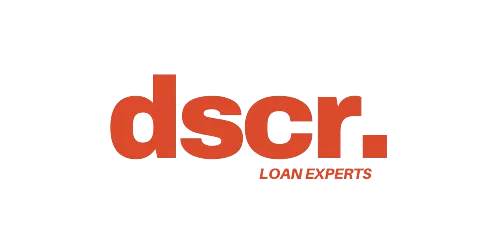
DSCR HELOC vs DSCR Loan: Which Financing Option Is Best?
Should I get a DSCR or HELOC?
When it comes to financing real estate investments or accessing the home equity in your properties, two powerful options often come to mind: Debt Service Coverage Ratio (DSCR) loans and DSCR Home Equity Lines of Credit (HELOCs).
Each financing method has unique advantages and is tailored to specific financial situations and investment property goals. This comprehensive guide will compare DSCR loans and DSCR HELOCs, helping you decide which option aligns best with your needs.
DSCR Loans Explained
A Debt Service Coverage Ratio (DSCR) Loan is primarily used by real estate investors to finance income-producing properties. The loan approval process focuses on the property’s ability to generate enough rental income to cover its loan payments, as measured by the DSCR.
Key Features of DSCR Loans
DSCR Calculation: The ratio of the property’s net operating income (NOI) to its loan payments (principal and interest). Lenders typically require a DSCR of at least 1.2 for approval.
Loan Purpose: Used to purchase or refinance rental property, commercial real estate, or other income-generating properties.
Credit Score Requirements: Generally requires a credit score of 620-680 or higher.
Interest Rates: Competitive rates for borrowers with strong credit scores and properties with solid rental income streams.
Loan Terms: Fixed or adjustable rates are available, with terms ranging from 5 to 30 years. Borrowers can often choose between a fixed interest rate or a variable rate, depending on their financial strategy.
What is a HELOC?
A DSCR HELOC is a specialized type of home equity line of credit designed for real estate investors. Unlike a conventional loan or a bank statement HELOC, a DSCR HELOC qualifies borrowers based on the rental income of their investment property rather than their personal income.
Key Features of DSCR HELOCs
Equity Line of Credit: Borrow against the available equity in your investment property.
Loan Purpose: Provides flexible, revolving credit for expenses like property improvements, new investments, or debt consolidation.
Credit Score Requirements: Minimum credit score of 680 or higher, with a debt service coverage ratio of 1.25 or higher required.
Interest Rates: Typically a variable interest rate, which can fluctuate with market conditions. Rates depend on the lender, the borrower’s creditworthiness, and the property’s performance.
Loan Terms: Includes a draw period (usually 10 years) for borrowing, followed by a repayment period (10-20 years) to repay the outstanding balance.
Benefits of a DSCR HELOC
A DSCR HELOC provides unique advantages tailored to real estate investors:
1. Increased Cash Flow
Tap into the home equity of your investment property to access cash for operational expenses or new acquisitions.
Consolidate existing debt or refinance loans to reduce monthly payments and improve monthly cash flow.
Use interest only payments during the draw period to minimize upfront financial strain.
2. Flexibility in Borrowing
Access funds as needed during the borrowing period, without committing to a lump sum loan.
Repay and re-borrow within the credit limit, offering financial agility to withdraw money when opportunities arise.
3. Tax Benefits
The HELOC interest may be tax-deductible, especially when used for rental property improvement or other qualifying expenses. Consult a tax professional to understand how HELOC interest tax deductible rules apply to your situation.
Comparing DSCR Loans and DSCR HELOCs
DSCR HELOC vs. Other Financing Options
Real estate investors often weigh DSCR HELOCs against other financing solutions, such as:
Traditional HELOCs: Secured by a primary residence and based on personal income. Less tailored for real estate investors.
Hard Money Loans: Easier to qualify for and processed quickly but come with higher interest rates and fees.
Cash-Out Refinance: Taps into equity in one lump sum but may involve closing costs and stricter underwriting.
Risks and Considerations
Both DSCR loans and DSCR HELOCs are powerful tools, but they come with risks:
DSCR Loan Risks
If the property fails to generate enough rental income, covering loan payments could become challenging.
Rising interest rates may impact affordability for borrowers with adjustable-rate loans.
DSCR HELOC Risks
Variable interest rates can increase over time, leading to higher monthly payments.
Over-borrowing against property equity can lead to financial strain, especially if market conditions tighten.
Which Should You Choose?

Choose a DSCR Loan if:
You’re focused on purchasing or refinancing income-producing properties.
You prefer predictable fixed monthly payments.
Your rental property has strong rental income potential.
Choose a DSCR HELOC if:
You want flexible, revolving access to funds through an equity line of credit.
You need to fund property improvements, consolidate existing debt, or cover education expenses.
You’re comfortable navigating a variable interest rate and have a plan to manage HELOC payments.
Tax Implications
Both DSCR loans and DSCR HELOCs may offer tax benefits, such as deductible HELOC interest or loan payments, when used for business or rental property purposes. Consult a tax professional to explore the potential tax advantages.
Conclusion
Both DSCR loans and DSCR HELOCs are excellent financing tools for real estate investors, but they serve different purposes. A DSCR loan is ideal for securing predictable, long-term financing tied to a property’s income potential, while a DSCR HELOC offers flexibility and a revolving line of credit to tap into equity for diverse needs.
By understanding the nuances of each option and analyzing your financial goals, you can make an informed decision that aligns with your investment strategy and long-term objectives.


